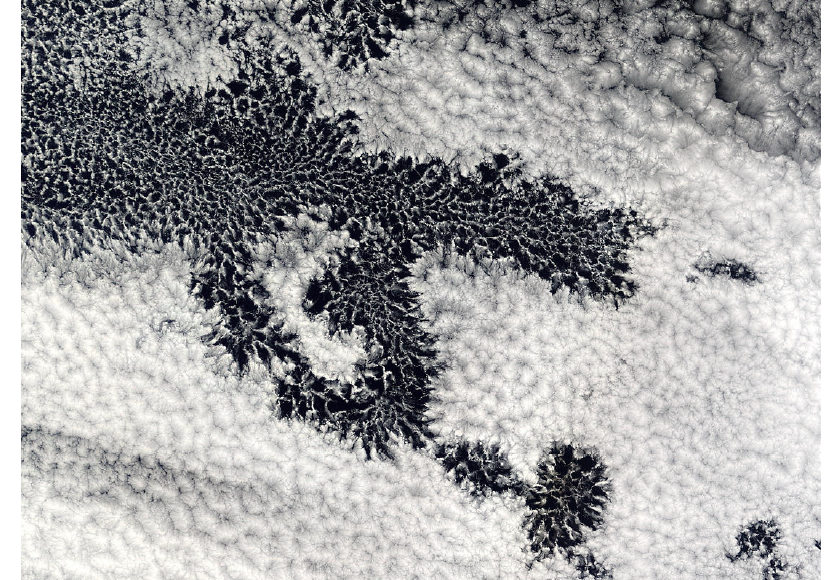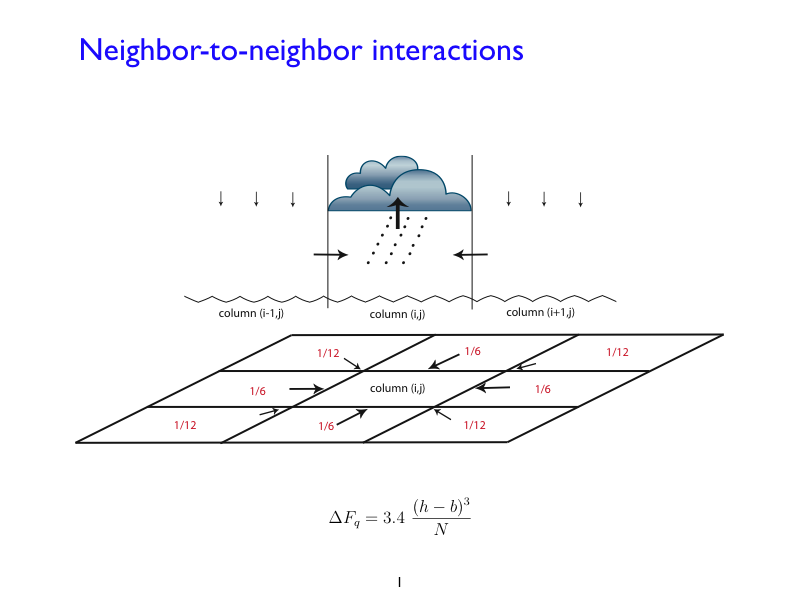|
MOTIVATION This
project is
inspired by the concept of multiple equilibria
or multiple regimes of behavior in the climate system (Ghil and
Childress, 1987), combined with the concept of emergent behavior in
lattice models (Anderson, 1997). These two concepts are applied
to a lattice of single-column mixed-layer models. An important
application would be to resolve the variability of stratocumulus cloud
fractions, in observations and GCMs.
The
Mixed
Layer Model (MLM) of Lilly (1968) has, for almost 40 years, been
a useful
tool to study dry and moist atmospheric boundary layers. Randall and
Suarez (1984) showed it to possess multiple
equilibria. We reproduce this with our MLM (Stevens 2002; Zhang et
al., 2005) in the bifurcation diagram of Figure
1, which plots mixed-layer height H
vs. large-scale divergence D.
The two solid lines represent the two branches of the stable steady
states: the shallow, warm
and moist clear sky boundary layer (CSBL) versus vs. the deep cool and
dry stratocumulus-topped boundary layer (STBL); the dashed line
represents the branch of intermediate, unstable solutions. The
behavior shown in Figure
1 is also found in the heat and moisture
fields of the model, with respect to other control parameters, besides D,
such as sea surface temperature (SST), wind
speed, free troposphere temperature and moisture and
cloud top radiative driving. This fairly robust model
behavior suggests that regime transitions between CSBL and STBL state
are possible when the system is subject to various fluctuations, which
may accumulate to overcome the potential
barrier associated with the presence of the unstable equilibrium.
Such fluctuations
could arise either internally, form small-, cloud-scale effects or
externally, from large-, synoptic-scale variability in the
model's control parameter fields. This
observation inspires us to formulate a stochastic-perturbation model to
simulate such fluctuations.
A possible transition is shown in
Figure 2, where LWP stands for liquid water path. Stratocumulus interests us because of its cooling effect on the global energy balance and subsequent feedbacks on climate and synoptic dynamics. To resolve its cloud fraction becomes more and more demanding. The cloud morphology of open cells (cloud-free air cells with cloudy air on the edge) and closed cells (cloudy air cells with cloud-free air on the edge) hints not only independent local convection or subsidence but also connections, besides advections, between the neighboring cells. The observations on the pockets of open cells (POCs) during DYCOMSII by Stevens et al (2005) support the idea that drizzle promotes regional cloud transitions. This
hints us, while the local dynamics are represented by MLM, an
interaction rule can be specified based on the drizzle effect. |
 Figure 1. Multiple Equilibria in Mixed Layer Model  Figure 2. Regime transit from STBL to CSBL  Figure 3. Pocket of Open Cells (POCs, DYCOMSII) |
MODEL OVERVIEW

Figure 4. The lattice model (PDF) Figure 5. The illustration of the interactions (PDF)
|
| RESULT Terminology:
|
REFERENCE
|
